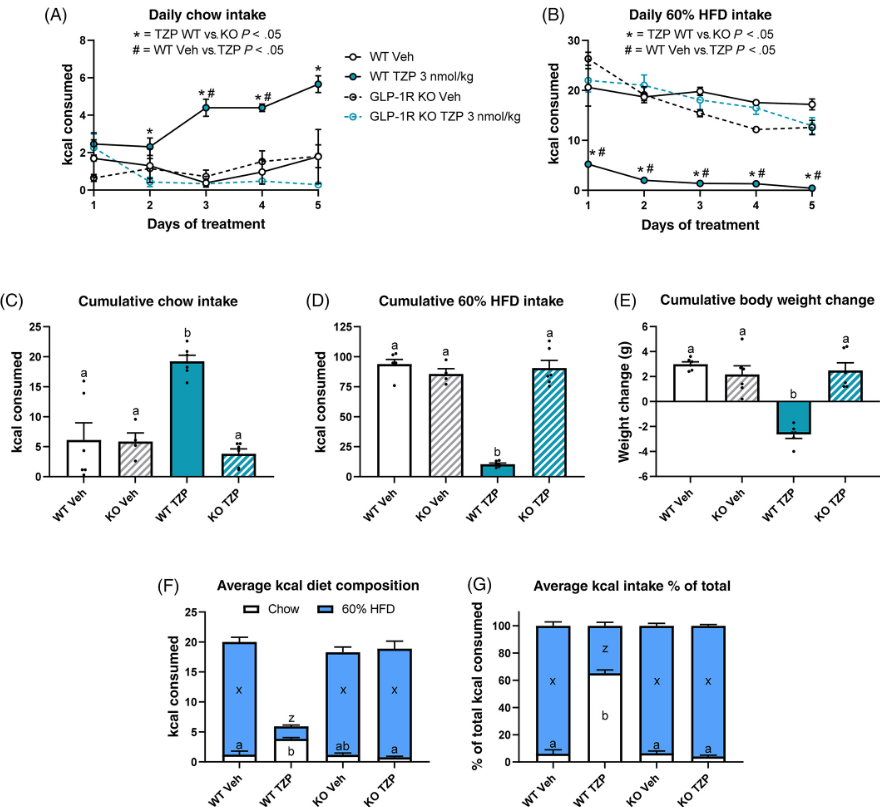Tirzepatide suppresses palatable food intake by selectively reducing preference for fat in rodents
Glucagon-like peptide-1 (GLP-1) receptor knockout eliminates dual glucose-dependent insulinotropic polypeptide (GIP)/GLP-1 receptor agonism-induced preference shift between 5-day choice chow and 60% high-fat diet (HFD).
Dual glucose-dependent insulinotropic polypeptide receptor (GIPR)/glucagon-like peptide-1 receptor (GLP-1R) agonists are an emerging class of therapeutics for the treatment of obesity and diabetes that reportedly offer superior weight loss and glycemic control over their GLP-1R agonist (GLP-1RA) monotherapy predecessors. GLP-1RAs enhance satiation and impressively favor the consumption of low-fat/low-sugar foods over highly-palatable foods. Healthier food choices have large implications for improving patient weight and metabolic health, yet the role of GIPR agonists (GIPRAs) alone or combined with GLP-1RAs in the regulation of palatable food intake and the role of specific macronutrients in these preferences has not been explored. To understand this regulation, we treated mice and rats on several choice diet paradigms of chow and a palatable food option with individual or dual GIPR and GLP-1R agonists.
In mice, the dual agonist tirzepatide suppressed total caloric intake, while promoting intake of chow over high fat/sucrose diet (HFD). Surprisingly, GIPR agonism alone did not alter food choice. The food intake shift seen with tirzepatide in wildtype mice was completely absent in GLP-1R knockout mice, suggesting that GIPR signaling does not contribute to the suppression of palatable food intake. Tirzepatide also selectively suppressed intake of palatable food but not chow in a rat two-diet choice model. This suppression was specific to lipids, as GLP-1RA and dual agonist treatment in rats on a choice paradigm assessing individual palatable macronutrients robustly inhibited intake of Crisco (lipid) without decreasing intake of a sucrose (carbohydrate) solution. Decreasing preference for high-caloric, high-fat foods is a powerful action of GLP-1RA and dual GIPR/GLP-1R agonist therapeutics, which may contribute to the weight loss success of these drugs. Publication Link
